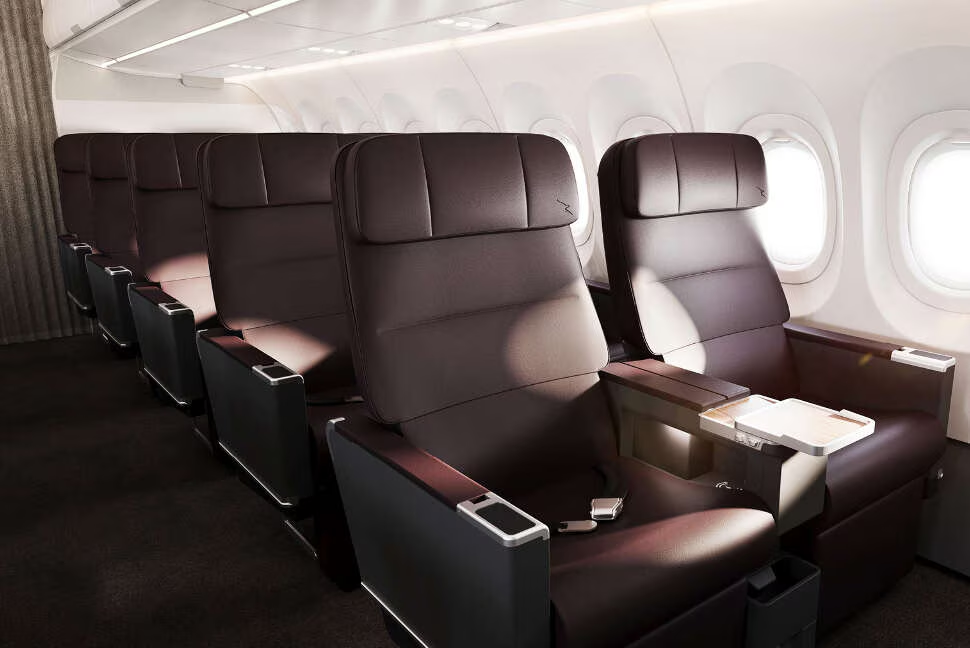Introduction to Qantas’ New Aircraft
Qantas, Australia’s flagship airline, has launched a new chapter with the delivery of its first Airbus A321XLR on July 2, 2025. Named “Great Ocean Road” and registered as VH-OGA, this advanced narrowbody aircraft arrived at Sydney Kingsford Smith International Airport from Airbus’ Hamburg facility via Bangkok. As the first of 28 A321XLRs for Qantas and 12 for Jetstar, its low-cost subsidiary, it replaces aging Boeing 737s. Qantas is the first Asia-Pacific carrier to operate this long-range aircraft, enhancing efficiency, sustainability, and route flexibility.
Capabilities of the Airbus A321XLR
The A321XLR redefines narrowbody aviation with a 4,700-nautical-mile (8,700 km) range, enabling flights up to 11 hours. Powered by Pratt & Whitney GTF engines, it cuts fuel use and CO2 emissions by 30% compared to older aircraft, aligning with Qantas’ net-zero emissions goal by 2050. It supports up to 50% Sustainable Aviation Fuel (SAF), with Airbus aiming for 100% by 2030. The aircraft features a two-class layout with 20 Business Class seats and 177-180 Economy seats, designed by Australian industrial designer David Caon, known for his work on Qantas’ A380 and 787 interiors. With 60% more carry-on storage, larger windows, and 20% increased cargo capacity, it boosts passenger comfort and operational versatility. Its ability to serve “thin” routes—lower-demand destinations unsuitable for widebodies like the A330 or 787—expands Qantas’ network.

Pros of the Airbus A321XLR
The A321XLR offers Qantas significant advantages. Its extended range enables direct flights to secondary cities in Asia and the Pacific, previously uneconomical for narrowbodies. Routes like Sydney to Bangkok (7,500 km) or Melbourne to Manila (6,300 km) are now viable, as shown by its 9,600 km delivery flight. Fuel efficiency reduces costs and supports sustainability. The modern cabin, with ergonomic seating and advanced in-flight entertainment, enhances passenger experience, potentially increasing loyalty. Its 197-200 seat capacity suits high-frequency, low-volume routes, optimizing load factors. The A321XLR’s flexibility allows initial domestic use on routes like Sydney-Melbourne, with seamless transition to international services.
Cons of the Airbus A321XLR
The A321XLR has limitations. Its narrowbody design offers less cabin space than widebodies, potentially reducing comfort on long flights over 8 hours, especially in Economy. With only 20 Business Class seats, it may not meet demand on premium routes like Sydney to Hong Kong. The aircraft’s range, while impressive, cannot support ultra-long-haul routes like Sydney to London, limiting its use for Qantas’ Project Sunrise. Competition from other carriers adopting similar aircraft may pressure fares on new routes.
Potential International Routes from Major Australian Cities
The A321XLR’s range unlocks new routes from Australia’s major hubs—Sydney, Melbourne, Brisbane, and Perth—to underserved destinations in Southeast Asia and the Pacific:
- Sydney (SYD): Nonstop flights to Bali (Denpasar, ~4,600 km), Manila (~6,200 km), or Bangkok (~7,500 km) are feasible. Pacific routes to Nadi (Fiji, ~3,200 km) or Port Vila (Vanuatu, ~2,500 km) cater to leisure travelers.
- Melbourne (MEL): Routes to Manila (~6,300 km), Hong Kong (~7,400 km), or Phuket (~7,000 km) serve business and tourism markets efficiently.
- Brisbane (BNE): Direct flights to Tokyo (NRT/HND, ~7,100 km) or Bali (~4,500 km) tap into key Asian markets, with potential for Bengaluru (~7,800 km).
- Perth (PER): Connections to Jakarta (~3,000 km), Phuket (~4,800 km), or Kuala Lumpur (~4,100 km) boost tourism and business links.
A New Chapter for Qantas
Qantas will deploy the A321XLR on domestic routes like Sydney-Melbourne-Brisbane from September 2025, post-crew training, before expanding internationally. Its ability to serve secondary cities enhances network flexibility and passenger convenience. The A321XLR’s efficiency and modern design position Qantas to compete in the Asia-Pacific while advancing sustainability. However, strategic route planning is needed to address its limitations, particularly on premium or ultra-long-haul routes. As more A321XLRs join the fleet, Qantas will offer travelers new destinations, improved comfort, and a greener approach, solidifying its role as a leader in connecting Australia globally.